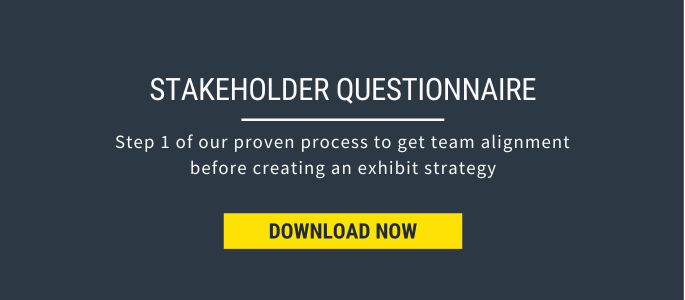When it comes to trade shows, I’m willing to bet upper management, sales and marketing all want the same thing – Results, right? However, getting a concept off the ground can be like pulling teeth with everyone prioritising different things.
Management: “We’re going in an exhibition!”
Marketing: “Let’s push this message and do it like this.”
Sales: “That won’t work / That’s not how we do things / insert other idea”
While this tale may continue there are things you can do to remove friction and get alignment within your team and get a trade show concept off the ground. Just like baking a cake, there is a recipe to assist you in getting the best result the first time around.
Sales often perceive marketing teams as dreamers with lofty ideas that seem disconnected from the practical reality they face daily. Marketing are always fighting with sales because they want to put too much equipment on the exhibit.
Everyone has different priorities. Let’s simplify it.
- The business has goals.
- Marketing map out the strategy to achieve the goals.
- Sales are responsible for meeting targets to achieve the goals.
The exhibition is a platform to assist the process. It is the only marketing medium where customers are coming to you to find ways to help them achieve their own goals.
While everyone wants great results from the trade show they are all coming from a different perspective. To create a winning strategy, everyone needs to pull in the same direction. Instead of seeing themselves as mutually exclusive, the two teams need to work together!
So, what’s the secret to selling a concept to your team?
First, understand that there are only a few main areas people clash over. Once you are prepared, the task doesn’t seem so scary.
- Cost
- Goal
- Look/Design
- What is to be displayed – Putting too much/too little on the exhibition stand
- “Comparisonitis” / Looking at what the competition are doing / Pride
- Fear of change / “That’s not what we normally do”
Get everyone aligned before writing the brief
This is the easiest method that gets the fastest result.
- Start your trade show planning process by getting everyone on the same page before a brief is written. Know that because they are all coming from a different angle, their priorities for the outcome may also be different.
- Have a “productive” ???? meeting to talk through areas where goals don’t line up.
It could be the single most important meeting you have and the secret to your success!
The reason this works so well is that everyone on the same page first and a common goal means less work to get everyone to the finish line later.
It’s so important that we use a stakeholder questionnaire in our own business to do this step. Here’s a copy from us to you!
But, Jess, I’m part way through already and didn’t do that?
Don’t worry, I’ve got you!
Other ways to sell a concept to your team
- Storytelling – weave a compelling narrative around the concept.
- Clarify the value – share how it aligns with the team and the company goals. How the concept will link to measurable outcomes.
- Present to individuals, not the whole team – This serves to address concerns without big influencers taking over and smaller voices not being heard. It makes them feel considered and allows room for their perspective/ideas.
- Show how thought has gone into individual strengths/preferences.
- Get your stand builders to present to the team everyone can hear firsthand why decision choices were made. This helps alleviates pressure off the marketing manager who is often has to deal with the team’s expectations while also presenting.
Basically, the overarching theme of getting buy in from your team remains the same. If everyone feels their goal is being met, how it happens doesn’t hold as much weight.
If you are selling in a concept that is wildly different to what your team expected, the sales team need to understand how the plan is going to help them reach the greater goal. That way they can embrace the marketing strategy and authentically sell it to prospects and make everything hum.
Selling a trade show concept to your team is the secret sauce of exhibit planning. It sets the wheels in motion for everything else to run smoothly. You’ll experience less politics, less interference with construction time, less stress and more time to work on your pre/during/post show marketing. It’s very possible!

